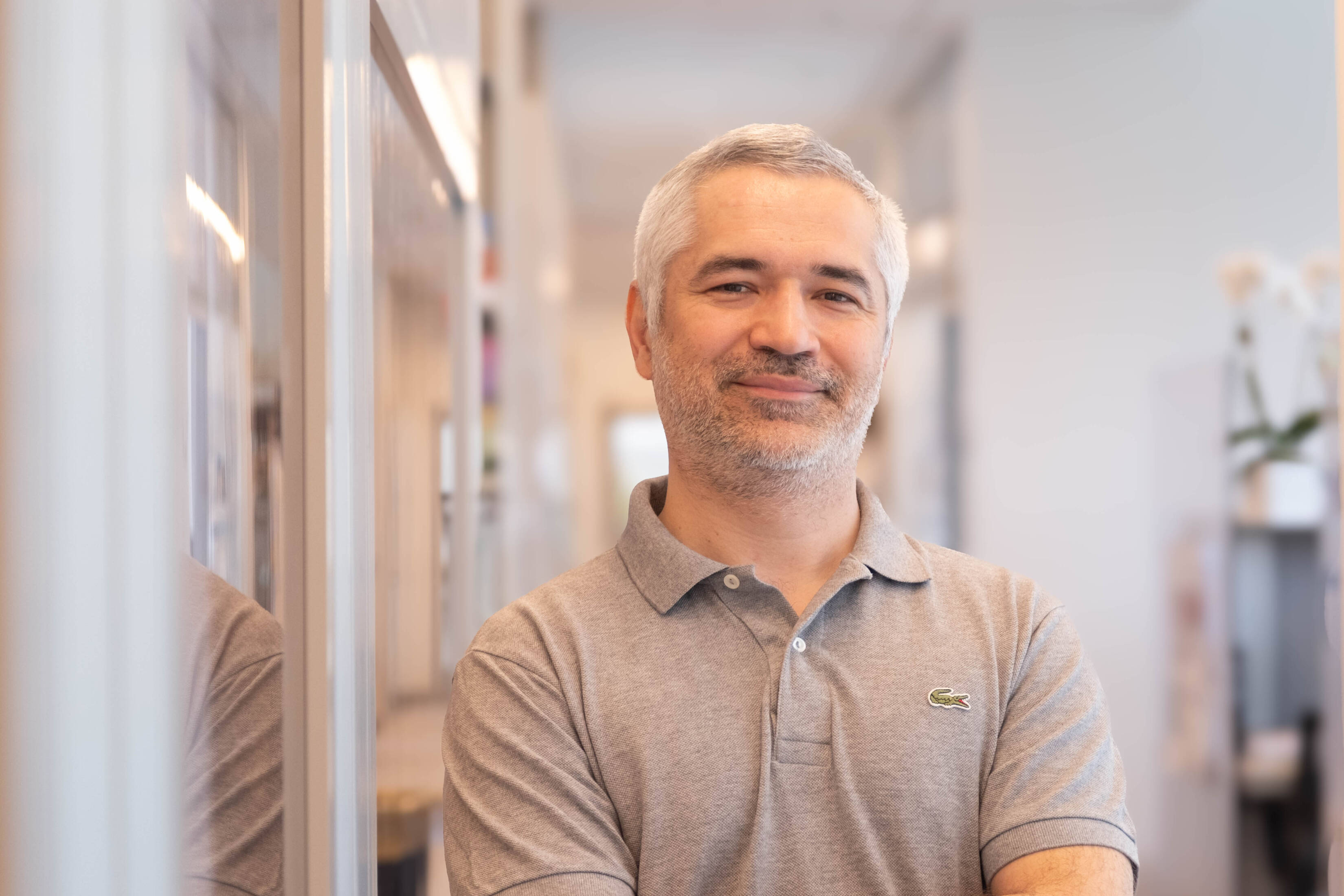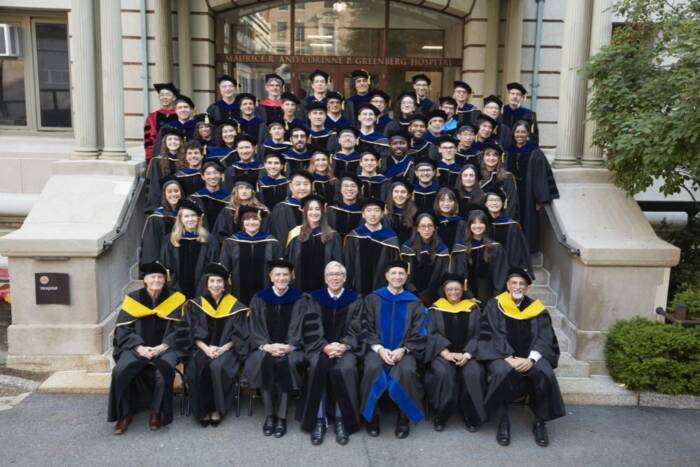Chemistry Magazine Names Rockefeller Nobel Laureate One of 75 Top Chemists
Nobel Prize winner Bruce Merrifield, Ph.D., John D. Rockefeller Jr. Professor Emeritus at The Rockefeller University, has been named one of the top 75 “distinguished contributors to the chemical enterprise” by Chemical & Engineering News (C&EN), the news magazine of the American Chemical Society, in a special issue marking the society’s 75th anniversary.
The magazine asked readers to nominate up to 20 people, living or dead, who made an impact on the chemical enterprise during the 75 years of C&EN’s existence. Readers nominated more than 1200 individuals.
“The [final] list is a ‘Who’s Who’ of outstanding researchers, people who helped transform the nature of the chemical industry and influential teachers,” according to the issue’s Editor’s Note.
Merrifield is a biochemist whose research has greatly advanced the understanding of the relations between the chemical structures of proteins and their physical and biological properties. In 1984 the Royal Swedish Academy of Sciences awarded the Nobel Prize in Chemistry to Merrifield “for his development of methodology for chemical synthesis on a solid matrix.”
In the 1960s Merrifield earned world renown for the development of a rapid, automated procedure for synthesizing peptides-simpler models of proteins consisting of the same, but fewer structural elements: i.e., amino acids, the so-called building blocks of proteins, linked together by what are called peptide bonds. A series of such linkages constitutes the “backbone” of peptides and proteins. Called solid-phase peptide synthesis, this procedure makes it possible to do in a matter of days what would previously have taken years to achieve, if at all. It has been credited with making possible the systematic exploration of the structural basis of the activity of enzymes, hormones and antibodies.
As Merrifield has explained: “The proteins are key components of all living organisms. All of the enzymes that catalyze biological reactions and many of the hormones that regulate them are proteins. If we are to understand, and eventually control, the events that occur in the body, we must first understand the composition, structure and function of the individual proteins.”
First developed in 1962, solid-phase peptide synthesis uses an insoluble solid support, polystyrene, which acts as an anchor for the peptide chain. Merrifield and his associates first synthesized bradykinin, angiotensin, desamino-oxytocin and insulin. In 1969 he and his colleague Bernd Gutte announced the synthesis of the extremely important enzyme ribonuclease. Since then, he and his colleagues have continued to refine and develop this technique to synthesize many other important long-chain peptides.
Following the synthesis of ribonuclease, researchers all over the world began adapting Merrifield’s procedure, often using machines that are now produced commercially, to make many other important molecules, including glucagon, somatostatin, b-endorphin, ACTH, trypsin inhibitor and lysozyme. The technique is also used to study the effect of synthetic antigenic peptides on the production of specific antibodies, work that may have important implications in disease research.
Merrifield still dedicates a large part of the work in his laboratory to refining solid-phase sysnthesis in order to tackle ever more difficult challenges. His group is currently working on an important group of peptide antibiotics and on the design and synthesis of good antagonists of the hormone glucagon, which may be useful for the control of blood sugar in diabetics.
The solid phase synthesis principle has also been adapted to the synthesis of polynucleotide and carbohydrates. In recent years it has been especially useful for multiple synthesis of peptide and for the combinatorial synthesis of peptides and non-peptide libraries containing very large numbers of individual compounds that are important for the rapid discovery of new active drugs.
Merrifield was born in Fort Worth, Texas on July 15, 1921. He received a B.A. in chemistry in 1943 and a Ph.D. in biochemistry in 1949, both from the University of California at Los Angeles. He worked as a chemist at the Philip R. Park Research Foundation from 1943 to 1944 and as a teaching assistant in chemistry at UCLA and a research assistant at its medical school from 1948 to 1949.
He joined The Rockefeller University (then known as The Rockefeller Institute for Medical Research.) in 1949 as an assistant. He became an assistant professor in 1957, associate professor in 1958 and professor in 1966. He was named John D. Rockefeller Jr. Professor in 1983. In 1968 he served as a Nobel Guest Professor in Uppsala, Sweden.
In addition to the Nobel Prize, Merrifield has received numerous awards, including the Lasker Award for Basic Medical Research (1969), the Gairdner Award (1970), the American Chemical Society (ACS) Award for Creative Work in Synthetic Organic Chemistry (1972), the Nichols Medal (1973), the American Peptide Society’s Alan E. Pierce Award (1979), the Science Award from Big Brothers, Inc. of New York City (1988). the Royal Society of Chemistry Medal (1987), the Ralph F. Hirschmann Award from the ACS (1990) and the Glenn T. Seaborg Medal (1993). He was inducted into the Chicago Museum of Science and Industry’s Nobel Hall of Science and received its Albert A. Michelson Award in 1985.
He has been awarded honorary doctor of science degrees by the University of Colorado (1969), Yale University (1971), The Newark College of Engineering (1972), the Medical College of Ohio (1972), Colgate University (1977), Boston College (1984), Fairleigh Dickinson University (1985), Bowling Green State University (1986), UCLA (1986), Adelphia University (1987), University of Montpellier, France (1988), Delaware Valley College (1991) and an honorary doctor of philosophy degree by Uppsala University (1970).
Merrifield was elected a member of the U.S. National Academy of Sciences in 1972. He is a member of Sigma Xi, Phi Lambda Upsilon, Alpha Chi Sigma, the American Chemical Society, the American Society of Biological Chemists and the American Institute of Chemists. He serves as associate editor of The International Journal of Peptide and Protein Research.


